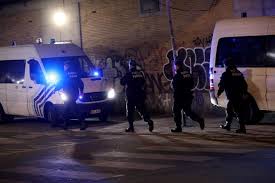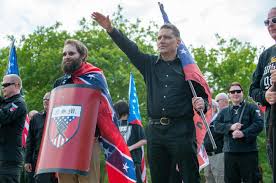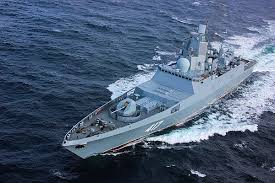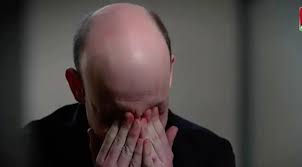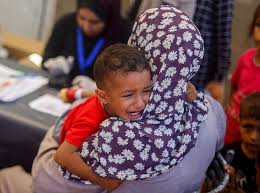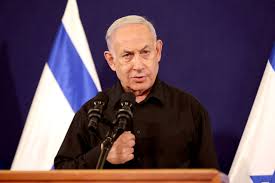
David Vergun
Although there were unknown soldiers who died on battlefields throughout U.S. history, the Tomb of the Unknown Soldier had its genesis in World War I.
In 1916, after a British army chaplain noticed a grave marked “An Unknown British Soldier,” he got the idea for what would become the United Kingdom’s Tomb of the Unknown Warrior. That memorial was dedicated Nov. 11, 1920, two years after the armistice that ended World War I.
The idea took hold and spread among other wartime allies, including France, Italy and the U.S. On Nov. 11, 1921, the U.S. Tomb of the Unknown Soldier was dedicated in Arlington National Cemetery.
Military historian Patrick K. O’Donnell researched the backstory of that dedication, including the stories of the soldiers who brought the unknown soldier’s remains to Arlington. He published his findings in the book “The Unknowns: The Untold Story of America’s Unknown Soldier and WWI’s Most Decorated Heroes Who Brought Him Home.”
On Sept. 29, 1921, the War Department ordered the selection of an unknown soldier from those buried in France. The selection process was carried out by the U.S. Quartermaster Corps, in cooperation with the French and U.S. Navy, O’Donnell said.
Three weeks later, a Quartermaster Corps team exhumed four bodies of unidentified Americans from each of four American cemeteries in France: Aisne-Maine, Meuse-Argonne, Somme and St. Mihiel.
“Each was examined to ensure that the person had been a member of the American Expeditionary Forces, that he had died of wounds in combat, and that there were no clues to his identity whatsoever,” O’Donnell said.
After mortuary preparation, the bodies were placed in identical caskets and shipping cases. The reason for this elaborate proceeding, O’Donnell explained, was to ensure that the one unknown soldier chosen would be truly a random selection, as this unknown soldier would represent the many other unknown soldiers. This followed the practice used by the other allies in their own process of selecting their own unknown soldiers.
On Oct. 23, 1921, all four caskets arrived by truck at the city hall of Chalons-sur-Marne. Army Sgt. Edward F. Younger of Headquarters Company, 2d Battalion, 50th Infantry, American Forces in Germany, was given the honors of selecting the unknown soldier the next day.
Younger himself had been wounded in battle and had received the Distinguished Service Cross for valor.
An elaborate ceremony followed, O’Donnell related. Younger, carrying a spray of white roses presented by a Frenchman who had lost two sons in the war, led the procession. As the French band in the courtyard played a hymn, Younger walked around the caskets several times before placing the roses on one to indicate his selection.
Younger then saluted the chosen unknown American soldier, after which the U.S. and French officials came forward to pay their respects. O’Donnell noted that the roses that had been placed on the casket remained there and were later buried with the unknown soldier in Arlington.
Following the ceremony, the casket of the unknown soldier was carried in a horse-drawn caisson through Chalons-sur-Marne to the railroad station, where it was placed aboard a special funeral train provided by the French government and taken via Paris to Le Havre, O’Donnell said. Along the way, more French and U.S. units and dignitaries honored the unknown soldier in an elaborate and dignified fashion.
Finally, on Oct. 25, 1921, the unknown soldier was carried aboard the cruiser USS Olympia back to the United States. On Nov. 9, 1921, the Olympia arrived at the Washington Navy Yard. On hand to receive the body of the unknown soldier were all the service chiefs, the secretary of war, and General of the Armies John J. Pershing, O’Donnell said.
The procession, led by the 3rd Cavalry Regiment, accompanied the horse-drawn caisson containing the unknown soldier to the Capitol rotunda, where more honors were bestowed by dignitaries, including President Warren G. Harding, and ordinary American citizens.
On Nov. 11, 1921, eight highly decorated WWI veterans, handpicked by Pershing himself, escorted the unknown soldier to Arlington National Cemetery, O’Donnell said.
They included five Army soldiers: Color Sgt. James W. Dell, an artilleryman; Cpl. Thomas D. Saunders, a combat engineer, and a Native American; 1st Sgt. Harry Taylor, a cavalryman; Sgt. Samuel Woodfill, an infantryman and Medal of Honor recipient; and 1st Sgt. Louis Razga, from the Coast Artillery Corps.
Additionally, there were two sailors and one Marine who participated. Those were Navy Chief Gunner’s Mate James Delaney, a torpedoman; Navy Chief Water Tender Charles Leo O’Connor; and Marine Corps Gunnery Sgt. Ernest A. Janson, a Medal of Honor recipient.
Pershing, the body bearers, and the unknown soldier had come “full circle,” O’Donnell said. Those servicemen had left America’s shores years earlier. While they were prepared to sacrifice themselves, they hadn’t at the time fully comprehended the true cost of war. While one had paid the ultimate price, O’Donnell said, each had come home forever changed by battles won and friends lost.
Today, the Tomb of the Unknown Soldier is guarded by soldiers of the 3rd U.S. Infantry Regiment, “The Old Guard.” Since 1921, two other unknown soldiers have joined the World War I unknown soldier: one from World War II and one from the Korean War. The selection process was similar to the first.
At one time, a fourth unknown soldier, representing the Vietnam War, was entombed there as well, O’Donnell said. However, that service member was later identified as Air Force Capt. Michael J. Blassie. He was exhumed and reburied in his home state of Missouri, per his survivor’s wishes.
The post Tomb of the Unknown Soldier Had Its Origins in World War I appeared first on The Frontier Post.

